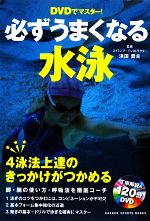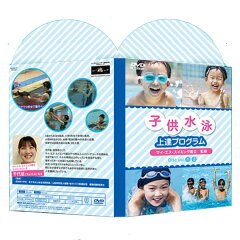
<prologue>
I started a blog called “The Baby Boomer Generation’s Miscellaneous Blog”(Dankai-sedai no garakutatyou:団塊世代の我楽多(がらくた)帳) in July 2018, about a year before I fully retired. More than six years have passed since then, and the number of articles has increased considerably.
So, in order to make them accessible to people who don’t understand Japanese, I decided to translate my past articles into English and publish them.
It may sound a bit exaggerated, but I would like to make this my life’s work.
It should be noted that haiku and waka (Japanese short fixed form poems) are quite difficult to translate into English, so some parts are written in Japanese.
If you are interested in haiku or waka and would like to know more, please read introductory or specialized books on haiku or waka written in English.
I also write many articles about the Japanese language. I would be happy if these inspire more people to want to learn Japanese.
my blog’s URL:団塊世代の我楽多(がらくた)帳 | 団塊世代が雑学や面白い話を発信しています
my X’s URL:団塊世代の我楽多帳(@historia49)さん / X
NHK’s historical drama “Idaten Tokyo Olimpic Banashi” has entered the second part, in which Tabata Seiji is the main character, and “ratings” seem to be picking up a little, probably due to Sadawo Abe’s light and comical speaking style. However, we should not be too optimistic because there may be some old people who say, “Sadawo Abe talks too fast and I can’t understand what he is saying.
In the second part of the drama, the theme changed from athletics to swimming and the story of Hideko Maehata came up.
Since I personally love swimming, I was suddenly interested in the second part of the drama.
Also, Katsuo Takaishi (1906-1966), a senior in my high school (but from the old Ibaraki Junior High School) and former president of the Japan Swimming Federation, is also in the drama, so I feel very close to the second part of the drama.
1.Japan’s first swimming pool was at the old Ibaraki Junior High School
By the way, this story may not appear in the upcoming “Idaten,” but it is about my alma mater, so I would like to share it with you.
The groundbreaking ceremony for the Ibaraki Junior High School swimming pool was held on September 6, 1915, and construction was completed on February 11, 1916, as a “project commemorating the accession to the throne of Emperor Taisho.
The majority of the work was done by the hard work of all the students.
Yasunari Kawabata and Soichi Ohya , who were students at the time, were also involved in this labor work.
It was “Japan’s first swimming pool” with a length of 23 ken (about 41.8 m) and a width of 15 ken (about 27.2 m). After several renovations, it became an official 50-meter pool, and in 1929, a 10-meter diving board was completed.
I used this pool for three years from 1965 when I attended the school, and I think the depth of the 10m square under the 10m diving board was 7 to 8 m. The 50m pool is also used for water polo competitions, so it is deepened like a mortar and does not stand tall when you get to the middle of the pool.
2.Japan’s first person to perfect the crawl swimming method was Tsutau Sugimoto (a physical education teacher at the former Ibaraki Junior High School)
Tsutau Sugimoto (杉本伝) (1889-1979) graduated from the Japan College of Physical Education (now Nihon University of Physical Education) and became a physical education teacher at Ibaraki Junior High School in 1911.
He studied crawl swimming in the latest books on swimming at the time and perfected the “crawl with breath” swimming technique. At that time, it was generally considered to be for short distances only, as it did not require a breath.
He taught the “Japan’s first crawl swimming method” to his students, including Katsuo Takaishi, and won the first prize at the National Swimming Championships held by the Tokyo Imperial University in 1920.

Since then, the team has won numerous national championships and participated in the “Far East Championships,” laying the foundation for “Swimming Nippon.
3.Great Success in Olympic Swimming Competitions
In the 1924 Paris Olympics, Tsutau Sugimoto, Katsuo Takaishi (5th in 100m freestyle, 5th in 1500m freestyle), and Tsunenobu Ishida competed; in the 1928 Amsterdam Olympics, Tsutau Sugimoto, Katsuo Takaishi (bronze in 100m freestyle, silver in 800m relay), Toshio Irie (bronze in 100m backstroke, silver in 800m relay), and Fujio Takashina (9th in diving board) competed. At the 1932 Los Angeles Olympics, Tsutau Sugimoto, captain Katsuo Takaishi, Toshio Irie (silver in 100m backstroke), and Yasutaro Sakagami (4th in water polo) competed.
Toshio Irie, who won the silver medal at the Los Angeles Olympics, set “new world records” in the 200m backstroke and 400m backstroke in the fall of 1928, when he was in his fifth year at Ibaraki Junior High School.
4.New swimming pool commemorating the 100th anniversary of the school’s founding and a monument marking the “birthplace of modern swimming in Japan.
Osaka Prefectural Ibaraki High School completed a new swimming pool in 1995 to commemorate the 100th anniversary of its founding. The water depth is deep enough for water polo.

In addition, a monument commemorating the “Birthplace of Modern Swimming in Japan” is located to the right of the school’s main gate.


【中古】 必ずうまくなる水泳 DVDでマスター! GAKKEN SPORTS BOOKS/浜田貴夫【監修】 【中古】afb
